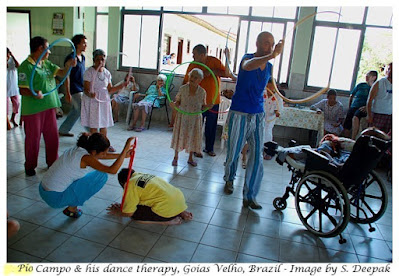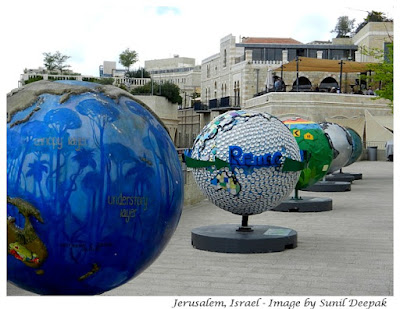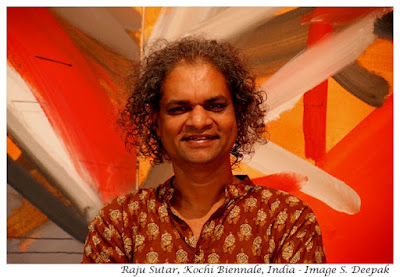Jeffrey A. Liberman, a professor of psychiatry at Columbia university (USA), has written, “Shrinks – the Untold Story of Psychiatry” (Little Brown and company, 2015). Psychiatry is the branch of medicine which deals with mental illness. It is a poorly understood area, not just for common public but also for some doctors like me. I found the book fascinating and read it in almost one sitting. (click on the images for a bigger view)
Mental Illness
Mental illness is unlike any other illness – it is a medical illness (something to do with our body, especially with our brain and its functioning) and it is also an existential illness (something to do with our thoughts, feelings and emotions). Each kind of mental illness is composed of a cluster of symptoms, that may be present in a variable pattern and severity in individual persons.The 3 most common kinds of mental illnesses are – (1) Psychosis such as schizophrenia (loss of touch with reality, confused thinking, hearing voices or seeing things, having strange beliefs);(2) Depression (feelings of apathy, sadness and uselessness); and, (3) Mania or bipolar disorder (characterised by extreme mood swings).
Personal Experiences
When I studied medicine in the 1970s in India, I found that psychiatry was a little confusing. It had a lot of Freud and his theories about our repressed sexual desires and it had a few medicines for conditions like depression. I could not make any sense out of it and I was sceptical about the explanations of Freud as the causes of mental illness.During the early 1990s, I started dealing with community-based rehabilitation (CBR) programs and came across two terms - 'mental illness' (strange behaviour) and 'mental disabilities' (such as low IQ and learning ability). In the communities, people used words like 'crazy' and 'idiots' for these two conditions. However, the affected persons found these colloquial terms negative and extremely hurtful. They taught me to use more neutral words such as persons with mental illness or learning disability.
I have also known some persons who define themselves as 'Survivors of Psychiatry', who do not like psychiatry and do not believe in its usefulness. They feel that psychiatry is a kind of conspiracy theory to control people and they say things like – "psychiatric medicines are useless, they are used only to make rich the Big Pharma; they take perfectly normal behaviours and call them illnesses to give them medicines; their drugs and treatments destroy people’s brains."
Negative Reputation of Psychiatry
Lieberman owns up immediately that for this negative reputation, psychiatrists themselves are to be blamed, “There’s good reason that so many people will do everything they can to avoid seeing a psychiatrist. I believe that the only way psychiatrists can demonstrate just how far we have hoisted ourselves from the murk is to first own up to our long history of missteps and share the uncensored story of how we overcame our dubious past ... Psychiatry’s story consists mostly of false starts, extended periods of stagnation, and two steps forward and one step back.”From the start of the nineteenth century until the start of the twenty-first, each new wave of psychiatric sleuths unearthed new clues—and mistakenly chased shiny red herrings—ending up with radically different conclusions about the basic nature of mental illness, drawing psychiatry into a ceaseless pendulum swing between two seemingly antithetical perspectives on mental illness: the belief that mental illness lies entirely within the mind, and the belief that it lies entirely within the brain. … Psychiatry, on the other hand, has struggled harder than any other medical specialty to provide tangible evidence that the maladies under its charge even exist. As a result, psychiatry has always been susceptible to ideas that are outlandish or downright bizarre; when people are desperate, they are willing to listen to any explanation and source of hope.
The term “psychiatry”—coined by the German physician Johann Christian Reil in 1808—literally means “medical treatment of the soul.” Psychiatry’s beginning is linked to a German named Franz Anton Mesmer in the 18th century, who rejected the common ideas of divine punishments and sins as cause of these disturbances and suggested that they were caused by the blockage of an invisible energy running through magnetic channels in our bodies. He called this energy 'animal magnetism'. Though his ideas about the invisible energy were wrong, but this was the beginning of looking for causes of mental illness inside ourselves.
Over the next 200 years, many other persons such as Benjamin Rush, Julius Wagner-Jauregg, Manfred Sakel, Neil Macleod, Walter Freeman, Melanie Klein and Wilhelm Reich, came up with similar theories about causes of mental illnesses, each of which resulted in its own treatment, which became famous for a period but was actually ineffective. Some of these treatments had mortal side-effects and none of them had any empirical basis.
Theories of Sigmund Freud
The most influential among these theories about causes of mental illnesses were those advanced by Freud (1856-1939) in early 20th century. His most celebrated book was, The Interpretation of Dreams, which explained the role of subconscious mind and its unresolved conflicts, leading to mental illness. Freud divided the mind into different levels of consciousness - 'id' (source of instincts and desires), 'superego' (voice of conscience) and 'ego' (everyday consciousness).These ideas revolutionised psychiatry and became the dominant way to understand and treat mental illnesses. Like the other theories mentioned earlier, even Freud’s theories did not have any empirical evidence and psychoanalytical approaches helped few, if any, persons with serious mental illnesses.
Freudian treatment required the doctor to remain remote and impersonal. As recently as the 1990s, psychiatrists were still being trained to stay aloof, deflecting a patient’s questions with questions of their own. About Freud, Lieberman writes, “Freud did teach me the invaluable lesson that mental phenomena were not random events; they were determined by processes that could be studied, analysed, and, ultimately, illuminated. Much about Freud and his influence on psychiatry and our society is paradoxical—revealing insights into the human mind while leading psychiatrists down a garden path of unsubstantiated theory.”
New Psychiatry After Second World War
Till 1940s, there was no other way to treat mental illnesses except for Freud’s psychoanalytic approach. The first medicines for treating the three most common mental illnesses were all discovered after the second world war - Chlorpromazine for treating psychosis, Imipramine for treating depression and Lithium Carbonate for treating the bipolar disorder.The impact of these medicines was dramatic. For example, Lieberman evokes the impact of using chlorpromazine with the following words.
“On January 19, 1952, chlorpromazine was administered to Jacques L., a highly agitated twenty-four-year-old psychotic prone to violence. Following the drug’s intravenous administration, Jacques rapidly settled down and became calm. After three steady weeks on chlorpromazine, Jacques carried out all his normal activities.” It is hard to overstate the epochal nature of Laborit’s discovery. Like a bolt from the blue, here was a medication that could relieve the madness that disabled tens of millions of men and women—souls who had so very often been relegated to permanent institutionalization. Now they could return home and, incredibly, begin to live stable and even purposeful lives.
During 1960s, another researcher-psychiatrist Eric Kandel, showed anatomical changes in brain linked with memory and opened the pathway to the understanding of biological causes of mental illnesses in the brain. During the 20th century, the only way to study brain was through autopsies and brain operations. After Kendel, a large number of biologists, geneticists, neurologists and other scientists, using other innovative technologies such as MRI, started studying brain and its functioning in live persons, providing new insights about mental illnesses.
The 3rd area of big change which initiated in the 1960s and has now become widespread, is to move away from psychoanalysis as suggested by Freud, and replace it with psychotherapies starting with Cognitive Behaviour Therapy (CBT) pioneered by Tim Beck. The unexpected success of CBT opened the door to other kinds of evidence-based psychotherapy such as interpersonal psychotherapy, dialectical behavioral therapy and motivational interviewing.
Future of Psychiatry
Lieberman proposes a pluralistic vision of psychiatry: “Mental illness is not only biological and is not only psychological – it involves both brain and mind in different ways. Treatments include psychotherapy and psycho-pharmaceuticals.” He also lists some of the promising areas of research which should improve the impact of psychiatry in the future - genetics (how certain patterns or networks of genes confer different levels of risk), new diagnostic tests for mental illness (including genetic tests, electrophysiology-tests, serological tests and brain imaging tests), and new developments in psychotherapy based on cognitive neuroscience.Some researchers are combining psychotherapy with medicines to increase their impact. Drugs that enhance learning and neuroplasticity can increase the effectiveness of psychotherapy and reduce the number of sessions necessary to produce change. For example, cognitive-behavioural therapy (CBT) can be combined with D-cycloserine, which enhances learning by acting on glutamate receptors in the brain, and strengthens the effects of CBT.
Internet-based applications for mobile devices that assist patients with treatment adherence, provide auxiliary therapeutic support, and enable patients to remain in virtual contact with their mental health providers, are another area for the future development.
Conclusions
I loved Liberman’s book because it gave an overview and understanding about mental illnesses and what can be done about them.Unfortunately, strange ideas about causes of mental illnesses, not based on any empirical evidence, continue to be common even today, attracting big group of followers. Lieberman has written about the current popularity of the ideas of one such person (Daniel Amen) and his propagation of another theory which is not based on any empirical proof. Charismatic persons have always had this power to make people believe in their extravagant ideas and only time shows that their fame was built on a false premise.



































